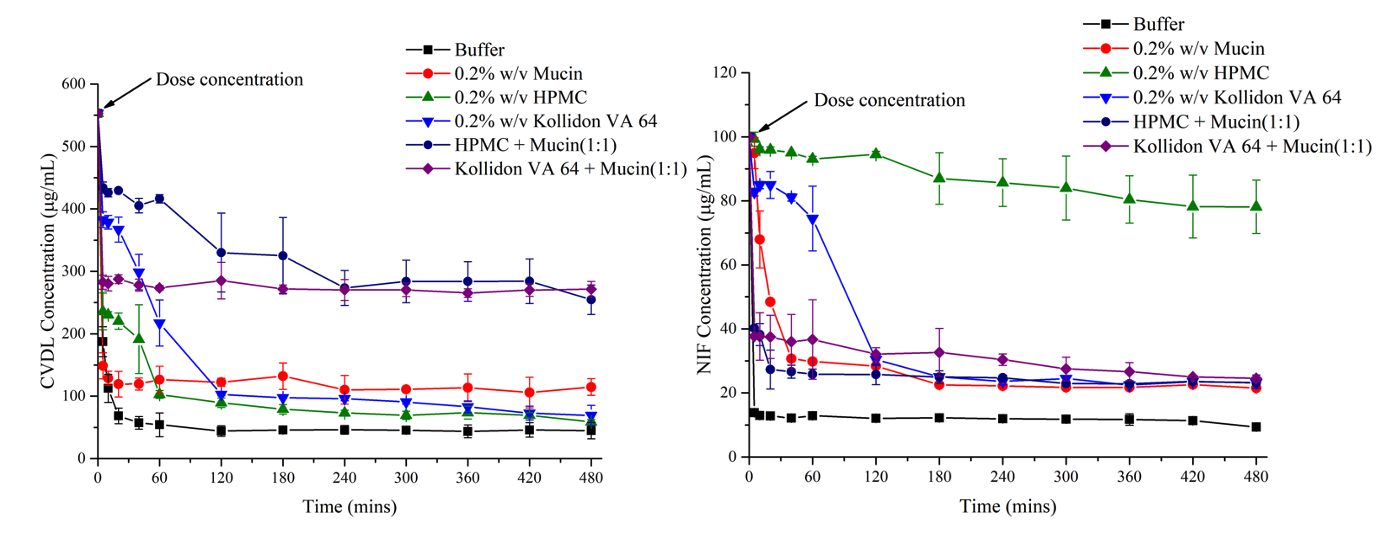(198r) Making Dissolution More Biorelevant: How Intestinal Mucus Is Advancing Our Understanding of Supersaturated Drug Formulations
AIChE Annual Meeting
2023
2023 AIChE Annual Meeting
Pharmaceutical Discovery, Development and Manufacturing Forum
Poster Session: Pharmaceutical Discovery, Development, and Manufacturing
Monday, November 6, 2023 - 3:30pm to 5:00pm
In this study, the impact of mucus on the crystallization of model compounds, carvedilol (CVDL) and nifedipine (NIF), from supersaturated solutions were quantified in the absence and presence of porcine mucin type (III). The potential of mucin to modify drug precipitation in-vitro was compared with known polymeric crystallization inhibitors such as hydroxypropyl methyl cellulose (HPMC) and Kollidon VA 64. The performance of these polymers was also investigated in the presence and absence of mucin. A combination of analytical approaches including high performance liquid chromatography and polarized light microscopy were used to evaluate the kinetics of crystallization from supersaturated solutions generated by the solvent shift approach. Crystal growth rate was quantified by measuring the rate of de-supersaturation in the absence and presence of mucin and polymeric additives.
Mucin was found to effectively stabilize the supersaturation of carvedilol and nifedipine at various degrees of supersaturation by inhibiting crystal growth. In carvedilol supersaturation studies, mucin was most effective in delaying precipitation at supersaturation ratios (SSR) of 5 and 10. In nifedipine supersaturation studies, mucin was the most effective precipitation inhibitor at SSR 5, but its effectiveness as a precipitation inhibitor decreased at a supersaturation ratio of 10. A 1:1 (% w/v) formulation of mucin and the polymers showed a synergistic effect on crystal growth inhibition of carvedilol. However, the presence of mucin drastically diminished HPMC’s efficacy in stabilizing supersaturation of nifedipine but promoted the crystal growth inhibition efficacy of Kollidon VA 64.
This work suggests an important role of mucus in formulation performance which is largely overlooked in biorelevant dissolution systems used to evaluate today’s formulations. A rational modification to common biorelevant dissolution testing to include appropriate mucus activity is critical for developing supersaturated drug delivery formulations and improving the prediction of drug precipitation risk.
